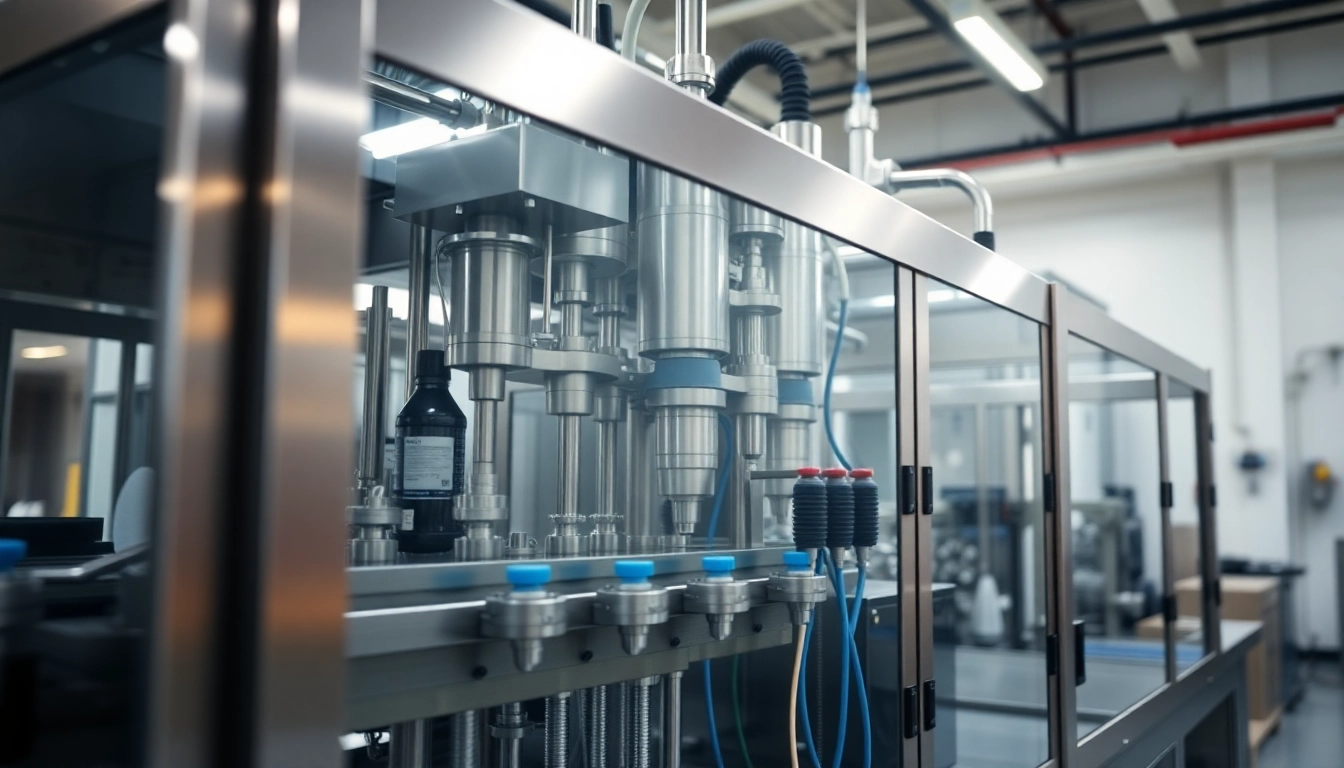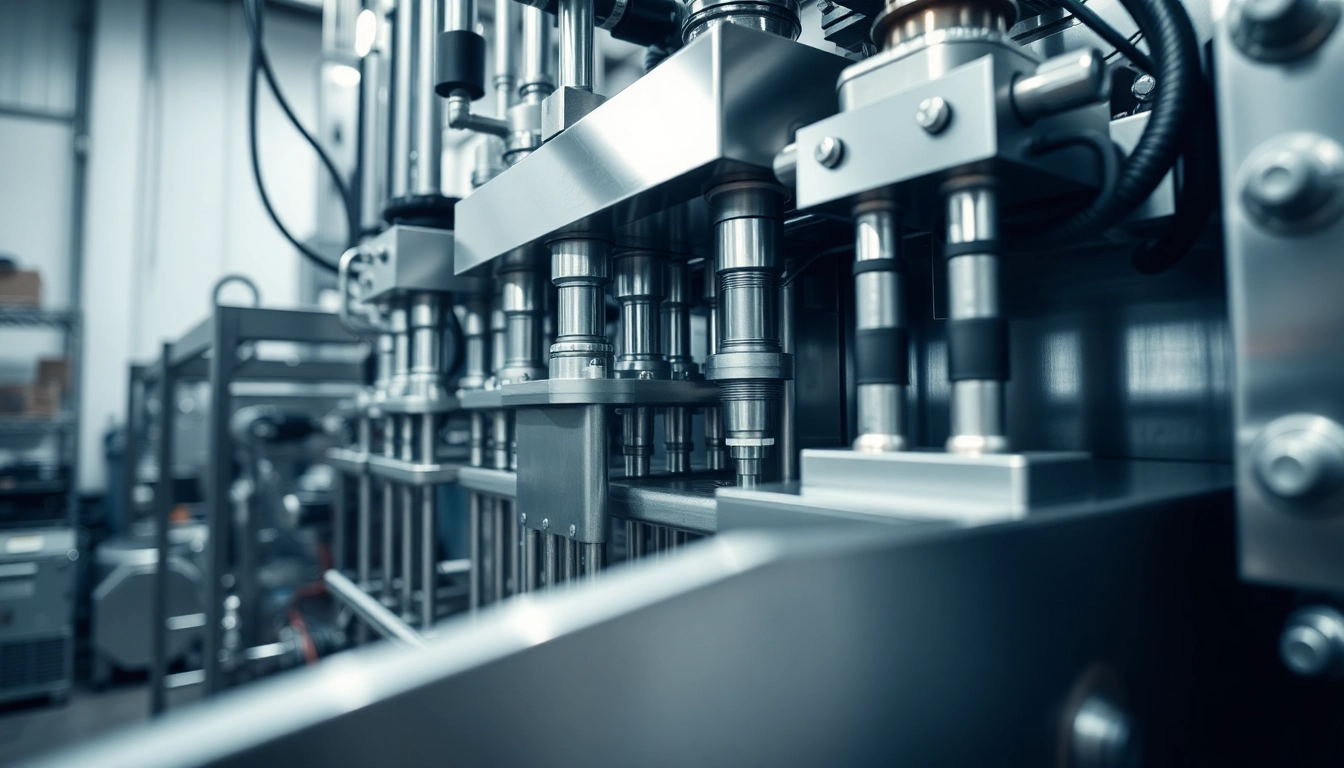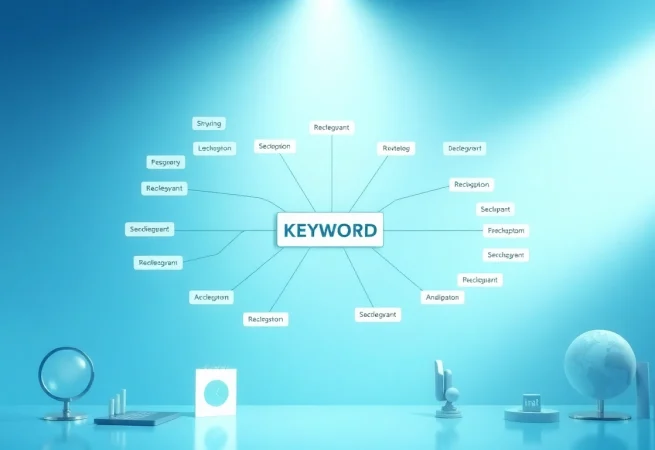

Enhance Your Home Ambiance with a Stylish Water Vapor Electric Fireplace
What is a Water Vapor Electric Fireplace?
A water vapor electric fireplace is a cutting-edge alternative to traditional wood and gas fireplaces, offering an innovative and environmentally friendly way to enjoy the ambiance of a fire. Unlike traditional fireplaces that burn fuel and produce actual flames, a water vapor fireplace uses ultrasonic technology to create a visually stunning, lifelike flame effect while emitting virtually no heat. This makes them ideal for year-round use, providing aesthetic pleasure without the associated risks or heat typically characterizing fire appliances. Not only does this technology allow for a realistic flame illusion, but it also enhances indoor air quality, making it a popular choice for modern homes. For more detailed specifications, check out our comprehensive guide on water vapor electric fireplaces.
Understanding the Technology Behind Water Vapor Fireplaces
The mechanism of a water vapor fireplace is based on the process of ultrasonic vaporization. This technology utilizes high-frequency sound waves to agitate water, creating a fine mist that mimics the look of flames. The result is a mesmerizing, dancing flame effect that can add warmth to any room without the associated dangers of traditional fireplaces. Some models even integrate LED lights that enhance the realism of the flames by changing colors and intensities, giving users the flexibility to customize their fireplace experience. Additionally, because these fireplaces do not generate real fire, they remain cool to the touch, making them a safe option for families with small children and pets.
Key Benefits of Water Vapor Electric Fireplaces
Water vapor electric fireplaces offer several advantages that set them apart from traditional fireplaces:
- Safety: As they do not produce actual flames or heat, water vapor fireplaces are much safer, reducing the risk of burns or house fires.
- Environmental Impact: These fireplaces do not release harmful emissions or pollutants into the air, contributing to a cleaner, healthier indoor environment.
- Flexibility: Water vapor fireplaces can be installed virtually anywhere, as they do not require a chimney or venting system. This opens up design possibilities not available with traditional fireplaces.
- Year-Round Ambiance: They provide a cozy fire-like atmosphere without the heat, making them perfect for warmer months when you want to enjoy a fire without overheating the room.
- Low Maintenance: Water vapor fireplaces are easier to maintain compared to their traditional counterparts, with less soot and ash to clean up.
Comparing Water Vapor vs. Traditional Fireplaces
When evaluating the differences between water vapor and traditional fireplaces, several key factors come into play:
- Heat Production: Traditional fireplaces generate significant heat, suitable for warming spaces in winter, while water vapor fireplaces create an ambiance without additional warmth.
- Installation Requirements: Traditional wood or gas fireplaces require extensive installation that often includes chimneys and flue systems. In contrast, water vapor fireplaces only need a power outlet.
- Operational Costs: Water vapor fireplaces typically have lower operational costs since they don’t require fuel purchases like wood logs or gas reserves.
- Emissions: Traditional fireplaces can emit harmful particulate matter, while water vapor models are eco-friendly and promote better air quality.
Top Features to Look for in Water Vapor Electric Fireplaces
Flame Realism and Safety Features
One of the standout features of water vapor fireplaces is their incredible realism. Look for models that feature:
- Adjustable Flame Settings: Many fireplaces allow you to customize flame height and intensity, enhancing the illusion of a real fire.
- Multi-Color LED Options: The ability to switch flame colors—from orange to blue and everything in between—adds a unique touch to your decor.
- Safety Shutoff Systems: Having features that automatically turn off the unit when water levels are low or when the unit overheats is crucial for safety and longevity.
Energy Efficiency and Operation Costs
Energy efficiency is a significant factor in selecting a water vapor electric fireplace. Key considerations include:
- Power Consumption: Look for models with energy-efficient ratings that minimize electricity usage while still delivering impressive visual effects.
- Operational Costs: Calculate your typical electricity costs against the benefits of reduced heat loss in winter. Water vapor fireplaces are known for their cost-effectiveness over time.
Design Options and Customization
Water vapor fireplaces come in various designs, catering to diverse aesthetic preferences. Consider the following:
- Wall-Mounted Units: Save space and add a sleek touch to your home with wall-mounted designs.
- Freestanding Models: Offering versatility and mobility, these are perfect for changing the ambiance of any room.
- Custom Inserts: Integrate water vapor technology into existing fireplaces for a modern update.
Installing Your Water Vapor Electric Fireplace
Preparation and Installation Steps
Installing a water vapor electric fireplace is generally straightforward, requiring minimal tools and expertise. Follow these steps:
- Choose a Suitable Location: Look for a spot with access to an electrical outlet and a position where the fireplace can be enjoyed optimally.
- Measure Space Accurately: Ensure the chosen model fits the intended space without overcrowding.
- Assemble the Unit: Follow manufacturer instructions throughout the assembly process, ensuring all components are correctly attached.
- Fill the Water Tank: Fill it with distilled water as recommended to prevent mineral buildup.
- Plug It In: Connect the unit to a power source and verify that all settings function correctly before regular use.
Maintenance Tips for Longevity
To ensure your water vapor fireplace operates efficiently and lasts for years, consider these maintenance tips:
- Regularly Check Water Levels: Monitor and refill the water tank as necessary, ensuring consistent performance.
- Clean the Unit: Dust and wipe down the exterior regularly and clean the interior components as directed by the manufacturer.
- Service When Necessary: Consult the user manual for recommended servicing intervals to keep your electric fireplace functioning optimally.
Common Installation Mistakes to Avoid
While installation is typically simple, several common mistakes can occur. Avoid these pitfalls:
- Ignoring Clearance Recommendations: Ensure there’s ample clearance around the unit to prevent overheating issues.
- Placing in Direct Sunlight: This can affect the visual effects and lead to faster evaporation of water.
- Overlooking Power Needs: Using an extension cord is not recommended; ensure a dedicated outlet is available for safe operation.
Popular Water Vapor Electric Fireplace Models
Reviews of the Top Models in 2023
As the market for water vapor electric fireplaces grows, several models stand out for their features, performance, and aesthetics. Some of the top 2023 models include:
- Aquafire® Models: Known for their advanced technology and safety features, these units blend seamlessly with modern decor.
- Dimplex Opti-Myst: Renowned for their realistic flame illusion, they utilize patented technology to enhance the ambiance.
- Sunlitup 31.6-inch Water Vapor Fireplace: A great budget option with impressive features including smart water systems and customizable flame effects.
Where to Buy Affordable Water Vapor Fireplaces
Purchasing a water vapor fireplace can be done through various channels to secure competitive pricing:
- Online Retailers: Websites like Amazon, Wayfair, and dedicated home improvement sites often offer seasonal promotions.
- Manufacturer Direct Sales: Buying directly from brands like Aquafire or Dimplex can sometimes yield better pricing and warranty options.
- Local Appliance Stores: Visiting retailers can allow you to see the fireplace in person and ask questions directly.
Customer Testimonials and Experiences
Below are some shared experiences from users who have integrated water vapor fireplaces into their homes:
“I love my new water vapor fireplace! It is incredibly realistic, and I can enjoy it year-round without the heat. It’s a perfect addition to our living room.” – Sarah M.
“Installation was a breeze, and the ambiance it brings is unmatched. It was the perfect solution for our small apartment.” – James L.
Frequently Asked Questions About Water Vapor Electric Fireplaces
Are Water Vapor Fireplaces Safe for Homes?
Yes, water vapor fireplaces are designed with safety in mind. They use water to create the flame effect, eliminating the risk of fire hazards and burns associated with traditional fireplaces. Furthermore, many models encompass safety features like automatic shutoff systems to enhance user safety.
Do Water Vapor Fireplaces Produce Heat?
Water vapor fireplaces do not produce significant heat, as they are primarily designed for aesthetics rather than function as a primary heating source. However, some models may generate slight heat from the electrical components.
What Makes Water Vapor Fireplaces Eco-Friendly?
Water vapor fireplaces are eco-friendly as they do not burn fossil fuels and release harmful emissions into the atmosphere. They contribute to a healthier indoor environment while providing an appealing flame effect to enhance home aesthetics.

Enhance Your Production Line with Reliable Filling Machine Supplier Solutions
Understanding Filling Machines
What is a Filling Machine?
A filling machine is an automated or semi-automated device used in various industries to fill containers with products like liquids, powders, and granules. These machines enhance the efficiency and accuracy of the filling process, significantly reducing human error and labor costs. In sectors such as food and beverage, pharmaceuticals, cosmetics, and chemicals, filling machines are essential for ensuring product consistency and meeting production timelines.
Types of Filling Machines Available
Filling machines come in various types, each designed to cater to specific product characteristics and packaging needs. Common types of filling machines include:
- Liquid Filling Machines: Ideal for beverages, oils, and chemicals. These machines can operate using piston, pump, gravity, or vacuum filling methods.
- Powder Filling Machines: Designed for filling powdery substances such as spices, flour, and detergents. They often incorporate augers or volumetric fillers.
- Granule Filling Machines: Used for products like sugar, rice, and seeds and are often based on volumetric systems.
- Viscous Filling Machines: Suitable for thicker products such as creams and gels, these machines utilize specialized pumps to handle high viscosity.
- Counter Pressure Filling Machines: Often used for carbonated beverages to prevent foaming during the filling process.
Benefits of Using Filling Machines in Production
The incorporation of filling machines into production lines offers numerous advantages:
- Increased Efficiency: Automated filling systems reduce filling time per container, allowing for faster production rates.
- Consistency and Accuracy: Filling machines can maintain high standards for product volume and weight, ensuring uniformity across batches.
- Labor Cost Reduction: By minimizing the need for manual labor, companies can significantly lower operational costs.
- Scalability: With various machine sizes and configurations available, businesses can scale up production capacity as needed.
- Improved Hygiene: Automated systems are generally more hygienic than manual processes, which is crucial in food and pharmaceutical industries.
Choosing the Right Filling Machine Supplier
Key Features to Look For
When selecting a Filling Machine Supplier, various features should be assessed:
- Technological Expertise: A supplier should have the latest technological advancements in filling machine design and operation.
- Customization Options: Look for suppliers that offer machines tailored to specific product needs and industry requirements.
- Quality Assurance: Suppliers should provide comprehensive quality control measures, including adherence to industry standards and certifications.
- After-Sales Support: Reliable and responsive customer support for maintenance, parts, and upgrades is crucial.
- Experience: Consider suppliers with a proven track record and extensive experience in the field.
Preparing for Supplier Meetings
Preparation is key when meeting potential filling machine suppliers. Consider the following steps:
- Define Your Requirements: Clearly outline your production needs, including the type of product, container sizes, and expected output rates.
- Research Potential Suppliers: Investigate their reputation, customer reviews, and the industries they serve.
- Prepare Questions: Develop a list of questions that address important considerations such as pricing, delivery times, warranty, and training services.
- Request Proposals: Engage multiple suppliers to obtain proposals for comparison, focusing on costs, machine specifications, and support services.
Evaluating Industry Standards
Understanding and evaluating industry standards is paramount in ensuring compliance and quality assurance. Key factors include:
- Regulatory Compliance: Make sure the supplier adheres to relevant local and international regulations, which can affect industries like pharmaceuticals and food safety.
- ISO Certifications: Suppliers should ideally have ISO certifications, demonstrating their commitment to quality management systems.
- Safety Standards: Review safety protocols and standards that the machines adhere to, ensuring a safe working environment.
Common Applications of Filling Machines
Filling Machines in Food and Beverage
In the food and beverage industry, filling machines play a crucial role in processing and packaging. They are used for filling containers with liquids such as juices, sauces, oils, and carbonated drinks. The ability of these machines to maintain hygiene standards and integrate with high-speed production lines makes them essential for meeting consumer demand and adhering to strict health regulations.
Cosmetics and Chemical Industries
Filling machines also serve the cosmetics and chemical industries, where precise filling is critical. From lotions and shampoos to industrial chemicals, products vary in viscosity and require specific filling technology to ensure accuracy and minimize waste. Automated filling machines can help maintain consistency in product quality while keeping production lines efficient.
Pharmaceutical Applications
In pharmaceutical environments, filling machines must comply with stringent regulatory requirements. These machines are vital for filling vials, syringes, and other containers with medications. The use of automated filling systems significantly reduces contamination risks and ensures accurate dosages, critical in the healthcare sector.
Maintenance and Support from Your Supplier
Routine Maintenance Practices
Regular maintenance of filling machines is essential to ensure their long-term performance. Best practices include:
- Scheduled Inspections: Routine check-ups can help identify potential issues before they become severe, ensuring smooth operation.
- Cleaning Protocols: Implementing effective cleaning protocols is crucial, especially in industries like food and pharma, to maintain hygiene.
- Calibration and Testing: Regular calibration ensures that filling accuracy is maintained. Testing the equipment under operational conditions can also highlight any performance issues.
Supplier Support Options
Reliable suppliers should offer robust support options. These typically include:
- Training Programs: Training for your staff on optimal machine operation and maintenance practices enhances efficiency.
- Customer Support: An accessible customer support team can assist with troubleshooting and operational guidance.
- Spare Parts Availability: Suppliers should guarantee easy access to spare parts to minimize downtime during repairs.
Upgrading Your Existing Machines
As technology advances, upgrading existing filling machines can enhance operational efficiency. Consider the following steps when contemplating upgrades:
- Assess Current Equipment: Evaluate the performance of your current machines to identify areas for improvement.
- Consult Suppliers: Engage with your supplier to discuss the latest technologies and enhancements available for your machines.
- Budget Considerations: Prepare a budget that encompasses the cost of upgrades, installation, and potential downtime during transitions.
Future Trends in Filling Machine Technology
Automation and Smart Technology
The future of filling machines is heavily influenced by automation and smart technology. Implementing smart sensors and IoT connectivity allows real-time monitoring of the filling process, enabling operators to optimize productivity, reduce errors, and enhance quality control. Automated systems can adapt to changes in production demands quickly and without significant manual input, promoting efficiency and responsiveness.
Sustainability in Production
With growing environmental concerns, many manufacturers are moving towards sustainable practices. This includes energy-efficient filling machines and the use of eco-friendly materials in both machine construction and packaging. Innovations such as reduced waste in filling processes and recycling initiatives are key trends for manufacturers focusing on sustainability.
The Impact of AI on Filling Processes
Artificial Intelligence (AI) is poised to revolutionize filling processes. Machine learning algorithms can analyze production data to predict maintenance needs, optimize filling processes, and reduce wastage. Moreover, AI can facilitate better demand forecasting, allowing companies to adjust their production schedules accordingly, improving efficiency and resource allocation.

Elevate Your Home Ambiance with a Water Vapor Electric Fireplace
Understanding Water Vapor Electric Fireplaces
What is a Water Vapor Electric Fireplace?
A water vapor electric fireplace offers an innovative solution to create the aesthetic allure of traditional fireplaces without the accompanying heat. These devices utilize advanced technology to produce a realistic flame effect using water vapor, providing both visual appeal and a unique ambiance within your home. Unlike conventional fireplaces, these electric models do not rely on wood, gas, or burning fuels, making them an environmentally conscious choice that aligns with modern concerns about air quality and energy efficiency.
Key Features and Benefits
Water vapor electric fireplaces come packed with features that distinguish them as desirable fixtures for contemporary homes. Here are some of the key benefits:
- Realistic Flame Effects: Employing ultrasonic technology, these fireplaces create a 3D illusion of flames that flicker and dance naturally, mimicking the appearance of a real fire.
- Safety: With cool-to-the-touch vapor flames, these fireplaces are safer for homes with children and pets, eliminating risks associated with traditional flames.
- Energy Efficiency: Many models operate with minimal energy consumption, making them financially beneficial for homeowners looking to lower utility bills.
- Year-Round Ambience: These fireplaces can be enjoyed even in warmer months, setting a cozy atmosphere without generating heat.
- No Venting Required: Unlike gas or wood-burning fireplaces, water vapor models do not require a flue or chimney, simplifying installation.
Comparative Analysis with Traditional Fireplaces
When evaluating the advantages of water vapor electric fireplaces against traditional options, several factors emerge. Traditional fireplaces often require complicated installations and produce significant heat, which can lead to energy inefficiencies. Furthermore, they emit smoke and pollutants unless they are strictly maintained or equipped with sophisticated ventilation systems.
In contrast, water vapor fireplaces provide a cleaner burn, as they do not consume combustible fuels. Additionally, they maximize design flexibility and can seamlessly integrate into various decor themes without the need for extensive alterations. This combination of benefits often makes water vapor electric fireplaces not only a stylish alternative but also a more practical choice for today’s environmentally aware consumers.
Installation and Setup
Required Tools and Specifications
Installing a water vapor electric fireplace is relatively straightforward, but it requires specific tools and an understanding of space requirements. Here’s a list of tools and prerequisites you’ll need:
- Tools:
- Power drill
- Screwdrivers
- Measuring tape
- Level
- Pliers
- Specifications:
- Access to an electrical outlet
- Space dimensions for the fireplace unit
- Water supply line (optional for some models)
- Drainage capability if necessary
Step-by-Step Installation Guide
Follow these steps to ensure a successful installation of your water vapor electric fireplace:
- Choose the Location: Determine where you want to place your fireplace, considering nearby outlets and water supply if needed.
- Prepare the Area: Clear the space and ensure that it meets the manufacturer’s specifications for the model you chose.
- Install the Unit: Depending on your model, you may need to mount the fireplace on a wall or place it inside a designated cabinet or mantel. Ensure it is level and secure using screws and brackets provided.
- Connect Power and Water: Plug in the fireplace to a nearby appropriate outlet. If your model requires water connections for vapor production, connect the water line according to the manufacturer’s instructions.
- Test the System: Once installed, turn on the unit to test the functionality of the flame effects and ensure everything operates smoothly.
Maintenance Tips for Longevity
To maximize the life and performance of your water vapor electric fireplace, consider the following maintenance tips:
- Regular Cleaning: Periodically wipe down the unit with a damp cloth to prevent dust buildup. Avoid using harsh chemicals that can damage the finish.
- Check Water Levels: For models with a water reservoir, maintain adequate water levels to ensure optimal vapor production.
- Inspect Connections: Regularly check electrical and water connections for any signs of wear or leakage and address issues promptly.
- Follow Manufacturer Guidelines: Adhere to the specific maintenance guidelines provided by your unit’s manufacturer for optimal performance.
Design Options and Customization
Popular Styles and Models
Water vapor electric fireplaces come in a variety of styles to complement any home decor. Popular options include:
- Wall-Mounted Units: Great for modern spaces, these units can be hung at varying heights to fit your aesthetic preferences.
- Freestanding Models: These versatile fireplaces can be moved easily and are perfect for those who want a temporary setup.
- Built-in Fixtures: Ideal for new constructions or renovations, built-in options can be customized to fit seamlessly into your home’s architecture.
- Replacement Inserts: For existing fireplace structures, inserts can breathe new life into outdated models while providing a contemporary vapor flame effect.
Customization Possibilities
Many brands offer customization features that allow you to personalize your fireplace to fit your lifestyle and preferences. Options can include:
- Choice of flame colors: Some models offer multi-colored flames, enhancing the visual spectacle.
- Sound effects: To mimic the crackling of real fire, choose models that have integrated sound functions.
- Remote control: For convenience, opt for fireplaces that come with remote control functionality for easy operation from a distance.
Decor Inspiration for Your Space
Incorporating a water vapor electric fireplace into your home can enhance the overall ambiance. Here are some decor ideas to maximize its impact:
- Create a Focal Point: Position the fireplace in a central location to draw attention and provide a gathering spot.
- Accent with Surrounding Decor: Use complementary furnishings such as cozy chairs, decorative mantels, or shelves to create a warm, inviting atmosphere.
- Color Coordination: Match the color scheme of your fireplace with the surrounding decor to create a cohesive look.
Safety and Efficiency Considerations
Safe Use Around Children and Pets
One of the standout features of water vapor electric fireplaces is their safety profile. Designed to reduce risks associated with open flames, here are suggestions for safe use:
- Ensure that children and pets are supervised around any electrical units.
- Teach children about the fireplace features and the importance of not playing with control mechanisms.
- Make sure the unit is stable and securely mounted to prevent tipping.
Energy Efficiency and Environmental Impact
Water vapor electric fireplaces are celebrated for their eco-friendly design. They do not rely on fossil fuels, leading to zero harmful emissions or pollutants. They provide stunning visuals while maintaining energy efficiency. Most models will use significantly less energy than traditional fireplaces, which can result in reduced utility bills and a lesser carbon footprint for homeowners. Strategic installation in well-insulated spaces can further enhance these efficiencies.
Common Safety Questions Answered
Customers often have queries regarding the safety and maintenance of water vapor fireplaces. Here are some common questions:
- Do they require a chimney? No, water vapor fireplaces do not produce harmful emissions and thus require no chimney or venting system.
- Can the unit overheat? Most modern water vapor fireplaces have built-in safety features that prevent overheating and ensure safe operation.
- Is it safe to leave the fireplace on overnight? While many models can safely operate for extended periods, always consult the manufacturer’s guidelines for their specific recommendations.
Customer Feedback and Reviews
What Users Are Saying
User experiences with water vapor electric fireplaces have generally been positive, with many praising their realistic imitation of fire and ease of installation. Customers often express satisfaction with the mood set within their space, highlighting the versatility these units bring.
Pros and Cons from Real Experiences
Based on customer reviews, here are some noted pros and cons:
Pros:
- Stunning flame effects that provide ambiance.
- Significantly safer than traditional fireplaces.
- Flexible installation options and minimal maintenance required.
- Ideal for year-round use without heat concerns.
Cons:
- Some customers note a limited heat output.
- Initial investment can be higher than traditional electric fireplaces.
- The necessity for a water source may limit placement options.
Making an Informed Purchase Decision
When considering a water vapor electric fireplace, it’s important to evaluate both your needs and the specific features of available models. Assess your space’s size, desired aesthetic, and any additional features like customizable flame colors or sound effects. It is also wise to read customer feedback and compare offerings from multiple manufacturers to ensure you select the right fireplace that meets your expectations.

Leading Filling Machine Supplier for Efficient Packaging Solutions
Introduction to Filling Machines
In the world of manufacturing and production, filling machines play a crucial role, enabling businesses to efficiently package their products. These machines are vital across various industries, including food and beverage, pharmaceuticals, cosmetics, and chemicals, streamlining the packaging process and ensuring consistency in the quantity filled. As a prominent Filling Machine Supplier, understanding the intricacies of filling machines can empower businesses to make informed decisions about their packaging needs.
What is a Filling Machine?
A filling machine is a type of equipment used to dispense a predetermined volume or weight of liquid, granule, powder, or solid into a container. They are pivotal in ensuring that products are packaged accurately and efficiently, catering to various sectors ranging from food production to pharmaceutical manufacturing. By utilizing specialized mechanisms, filling machines can maintain hygiene standards, adhere to regulatory requirements, and enhance overall productivity.
Different Types of Filling Machines
Filling machines come in various configurations and types, each designed to meet specific manufacturing needs. The main types include:
- Manual Filling Machines: These require human intervention to fill containers and are generally used for low-volume production.
- Semi-Automatic Filling Machines: Operated with some manual control, these machines increase efficiency and reduce labor costs while still requiring some human oversight.
- Fully Automatic Filling Machines: These machines operate entirely on their own, making them ideal for high-volume production settings. They typically include advanced technology that monitors and controls the filling process.
- Piston Filling Machines: Popular for viscous liquids, these machines utilize pistons to deliver precise amounts of product, ensuring accuracy in each container.
- Pump Filling Machines: Best for thin liquids, these machines utilize pumps to fill containers with speed and efficiency.
- Gravity Filling Machines: Using gravity to fill containers, these are best suited for low-viscosity liquids.
- Vacuum Filling Machines: These machines remove air from the container to preserve product quality, particularly in the food and beverage sector.
Applications of Filling Machines
Filling machines serve various applications across multiple industries:
- Food and Beverage Industry: From juices to sauces and carbonated drinks, filling machines ensure accurate servings while minimizing spills and contamination.
- Pharmaceutical Sector: They are essential for distributing liquids and powder formulations, ensuring medications are dosed accurately for efficacy and safety.
- Cosmetics and Personal Care Products: Filling machines are also used for lotions, creams, and perfumes, requiring precision to maintain product integrity.
- Chemicals: Industrial chemicals often require specialized filling machines to manage hazardous materials safely and efficiently.
Choosing the Right Filling Machine Supplier
Selecting the right filling machine supplier is a critical decision that can significantly impact production efficiency and product quality. Here are key considerations to guide your choice:
Evaluating Supplier Expertise
Assessing a supplier’s expertise in filling technology is essential. Look for suppliers with a proven track record in your industry, as they are more likely to offer machines that cater to your specific needs. Examine their history, types of machines they provide, and the ranges of products they support. Consider reaching out to existing clients for testimonials regarding the supplier’s performance and reliability.
Quality Certification and Standards
Quality certifications such as ISO 9001 can assure you of the supplier’s commitment to maintaining industry standards. Suppliers should comply with relevant regulatory requirements related to safety, hygiene, and operational efficiency, particularly in industries such as food and pharmaceuticals. Request documentation to verify that their machines meet these standards and protocols.
Customer Support and Service
Post-purchase support is a crucial aspect to consider when selecting a supplier. A reliable filling machine supplier should offer comprehensive services, including installation, training, and ongoing maintenance. Evaluate their customer service track record, availability of technical assistance, and access to replacement parts. A responsive support team can minimize downtime and ensure your equipment stays operational.
Benefits of Using Automated Filling Machines
The integration of automated filling machines can yield significant benefits for manufacturing businesses, enhancing efficiency and effectiveness throughout the production line. Some notable advantages include:
Increased Efficiency and Productivity
Automated filling machines drastically reduce the time taken to fill containers, which is especially beneficial in high-demand settings. With minimal human intervention, these machines can operate continuously, increasing production rates and allowing businesses to meet larger volumes of orders promptly.
Precision and Accuracy in Filling
With advanced technology, automated filling machines offer heightened accuracy that manual processes cannot match. This precision minimizes product wastage and ensures that each container is filled to the correct volume, which is vital for compliance in industries like pharmaceuticals and food production.
Cost Savings in the Long Term
Investing in automated filling solutions can lead to significant cost savings over time. Beyond the reduction in labor costs, these machines decrease material wastage, ensuring greater efficiency in operations. While the upfront costs may be higher, the long-term benefits often justify the initial investment.
Innovations in Filling Machine Technology
The evolution of filling machines is marked by technological innovations that enhance their functionality. Staying informed about these trends is essential for businesses aiming to optimize their packaging processes. Notable innovations include:
Smart Technology Integration
Current filling machines increasingly incorporate smart technology, enabling real-time monitoring and data collection. These innovations allow businesses to track production efficiency, detect inconsistencies, and optimize workflows through actionable insights. Features such as IoT integration facilitate predictive maintenance, reducing unplanned downtimes.
Eco-Friendly Solutions in Manufacturing
As sustainability becomes a focal point in manufacturing, many suppliers are developing eco-friendly filling machine solutions. These machines are designed to minimize energy consumption, reduce waste, and utilize sustainable materials in their construction. Manufacturers are also adapting to changing consumer preferences for eco-conscious packaging.
Future Trends in Filling Machines
Industry experts predict several future trends in filling machine technology, including:
- Increased Customization: Tailored solutions that cater to unique manufacturing processes will become more prevalent, allowing businesses to maximize output.
- Enhanced Automation: Future machines will likely integrate AI and machine learning techniques to further streamline operations and increase adaptability in production lines.
- Advanced Cleaning and Safety Features: Innovations in hygiene technology will address increasing health regulations, particularly in food and pharmaceutical industries.
Conclusion: Partnering with a Reliable Filling Machine Supplier
In conclusion, partnering with a reliable filling machine supplier can profoundly impact the packaging efficiency of your business. As you evaluate potential suppliers, consider their expertise, quality certifications, customer support, and technological advancements. Implementing automated filling solutions not only enhances efficiency and accuracy but also positions your business to adapt to future market demands.
Key Takeaways for Businesses
To summarize:
- Filling machines are essential to achieving efficient packaging across various industries.
- Choosing the right supplier is critical; consider their expertise and support services.
- Automation significantly enhances productivity, precision, and cost-efficiency.
Getting Started with Your Supplier
To embark on your journey towards optimizing your filling processes, start by conducting thorough research on potential suppliers. Compile a list of questions regarding their products, services, and support systems. Arrange consultations to discuss your specific requirements, ensuring alignment with your operational goals.
Resources and Further Reading
For additional insights, consider exploring industry-specific forums, webinars, and publications. Engaging with peer discussions can provide valuable perspectives on the latest trends and technologies in filling machine solutions.










